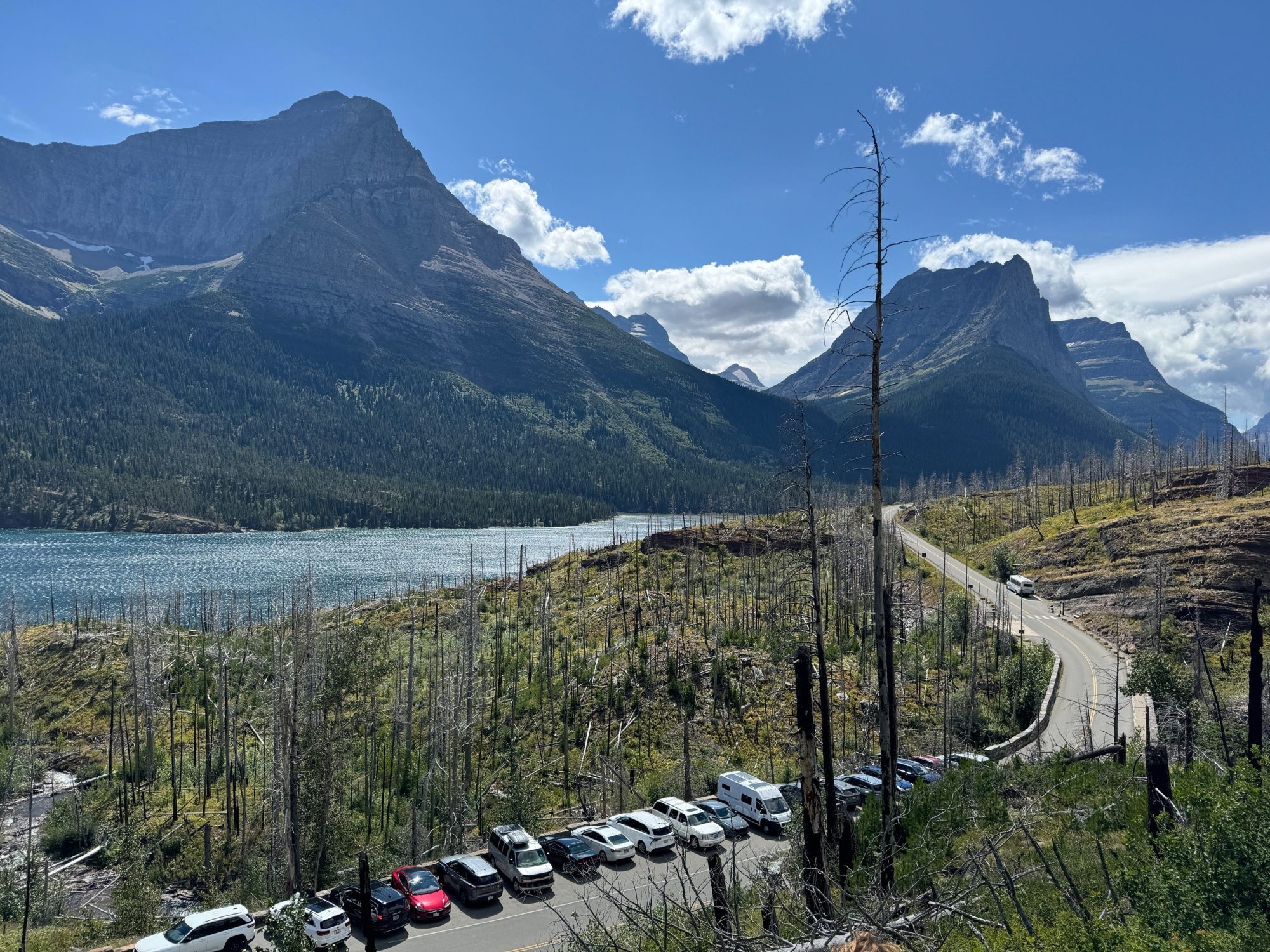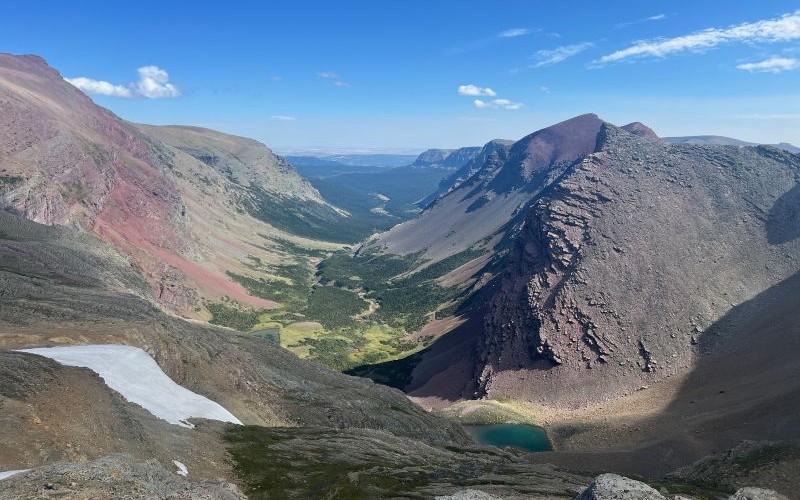As first-time visitors to this walker’s eutopia, we take a guided hike and draw on expert knowledge to explore Glacier’s magnificent scenery on foot.
Noel, our guide for the day, pauses at the signpost signalling the entry point to the Highline Trail. Around us, the majestic Rocky Mountains, silhouetted against clear blue skies, descend steeply to lush green valleys. But we haven’t stopped simply to admire the breathtaking scenery in Glacier National Park, and Noel gathers our group of 12 into a huddle, checking everyone is attentive. “We’ll shortly reach the narrowest section with the metal handrail,” she says. “Please stay in single file and hold onto the rail. Are we all ready?”
One by one we follow our leader onto the path as it hugs the side of the mountain for a quarter of a mile to reach a 6-8 feet wide ledge, fitted with a trusty hand cable for support on the short 1500ft section with sheer drops to the left. Despite this airy portion, the Highline Trail is one of the most popular in the 1,000,000-acre park, following the Continental Divide with non-stop epic views – by mid-morning the trail is busy with trekkers.
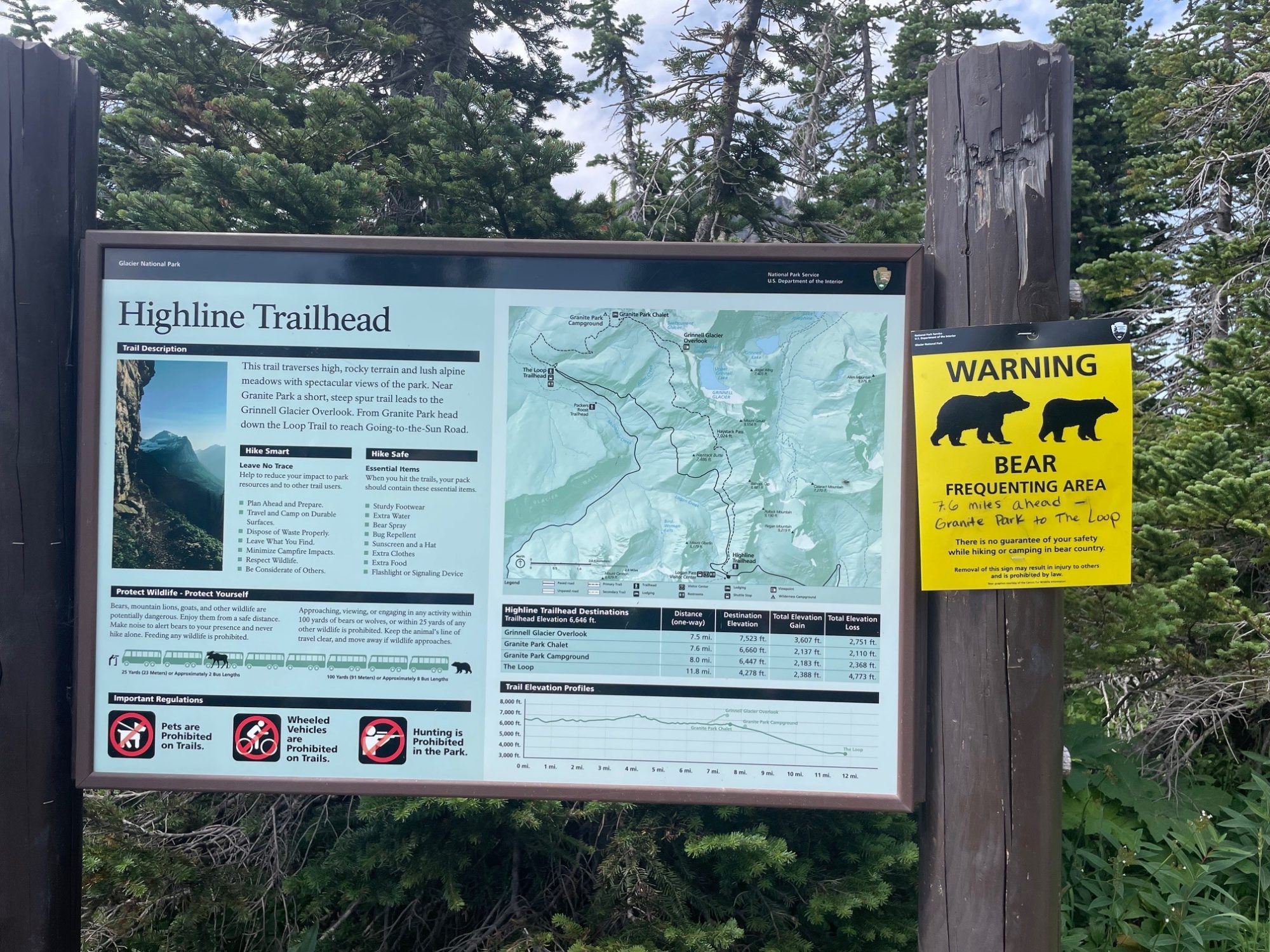
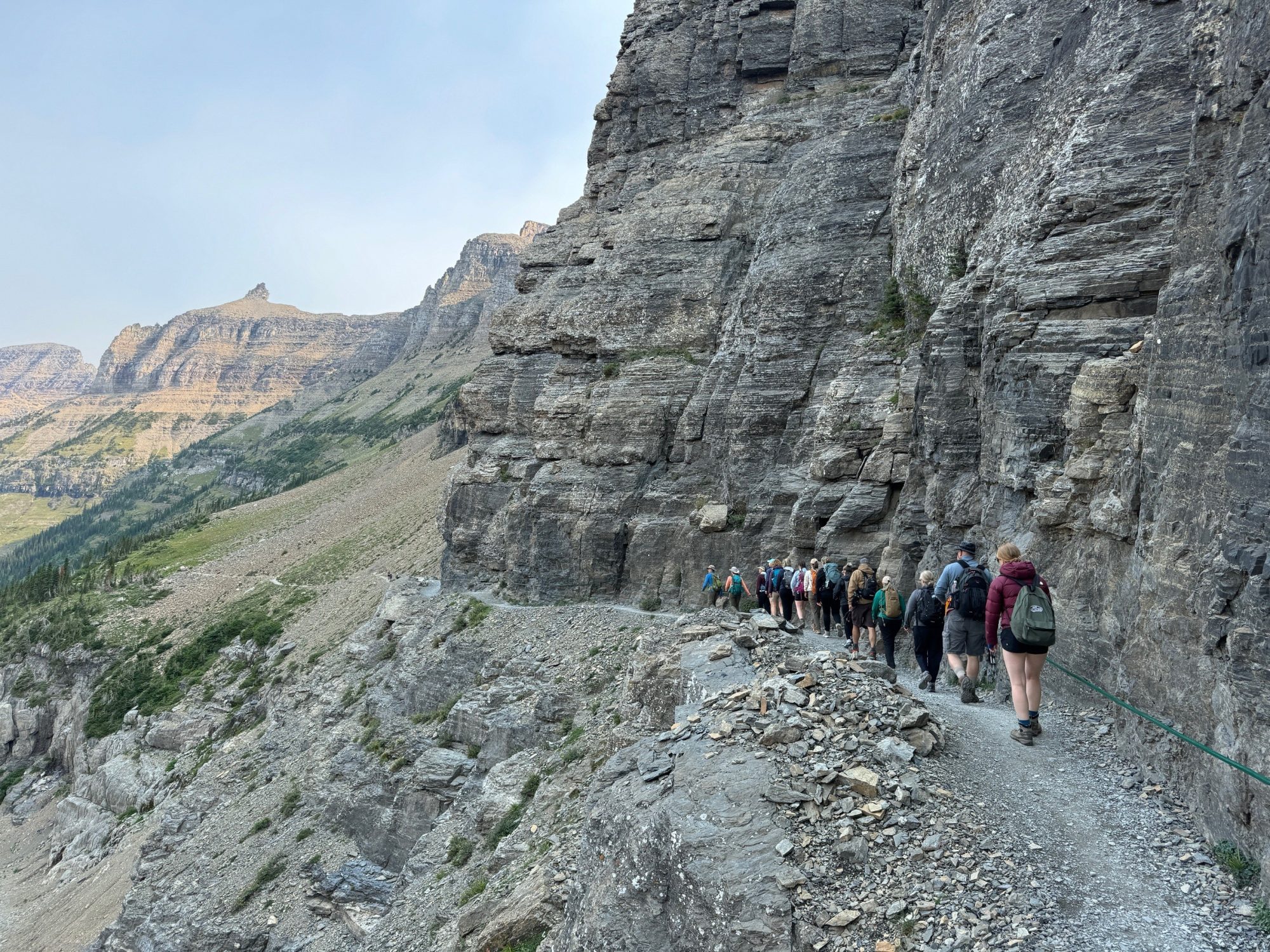
Montana’s Glacier National Park is a hiker’s paradise. With over 700 miles of trails surrounded by snow-capped peaks and dramatic carved valleys, mountain paths lead to glorious turquoise lakes, lush alpine meadows and historic chalets. As visitors wander through the area christened the ‘Crown of the Continent’, one of the most ecologically diverse landscapes in the world’s temperate zones, it’s with eyes peeled for sightings of bighorn sheep, elk, moose and the ultimate prize – a grizzly bear.
On this sunny late summer day, my family and I have joined a Glacier Institute (glacierinstitute.org) educational 6-mile day hike. Confession time – while I absolutely adore hiking, I have a, perhaps slightly irrational, fear of bears, heightened by my family’s blasé attitude towards a potential encounter. With Glacier National Park home to an estimated 300 grizzlies and 600 black bears, it’s at my behest that we’ve joined an organised trip on day one of our visit. Armed with bear spray (which our guide quickly reassures us she has it covered), we meet our group at the outfit’s Columbia Falls location at 8am for a briefing before an hour and a half minivan ride to our starting point at Logan Pass (6646ft), via the infamous Going-to-the Sun Road.
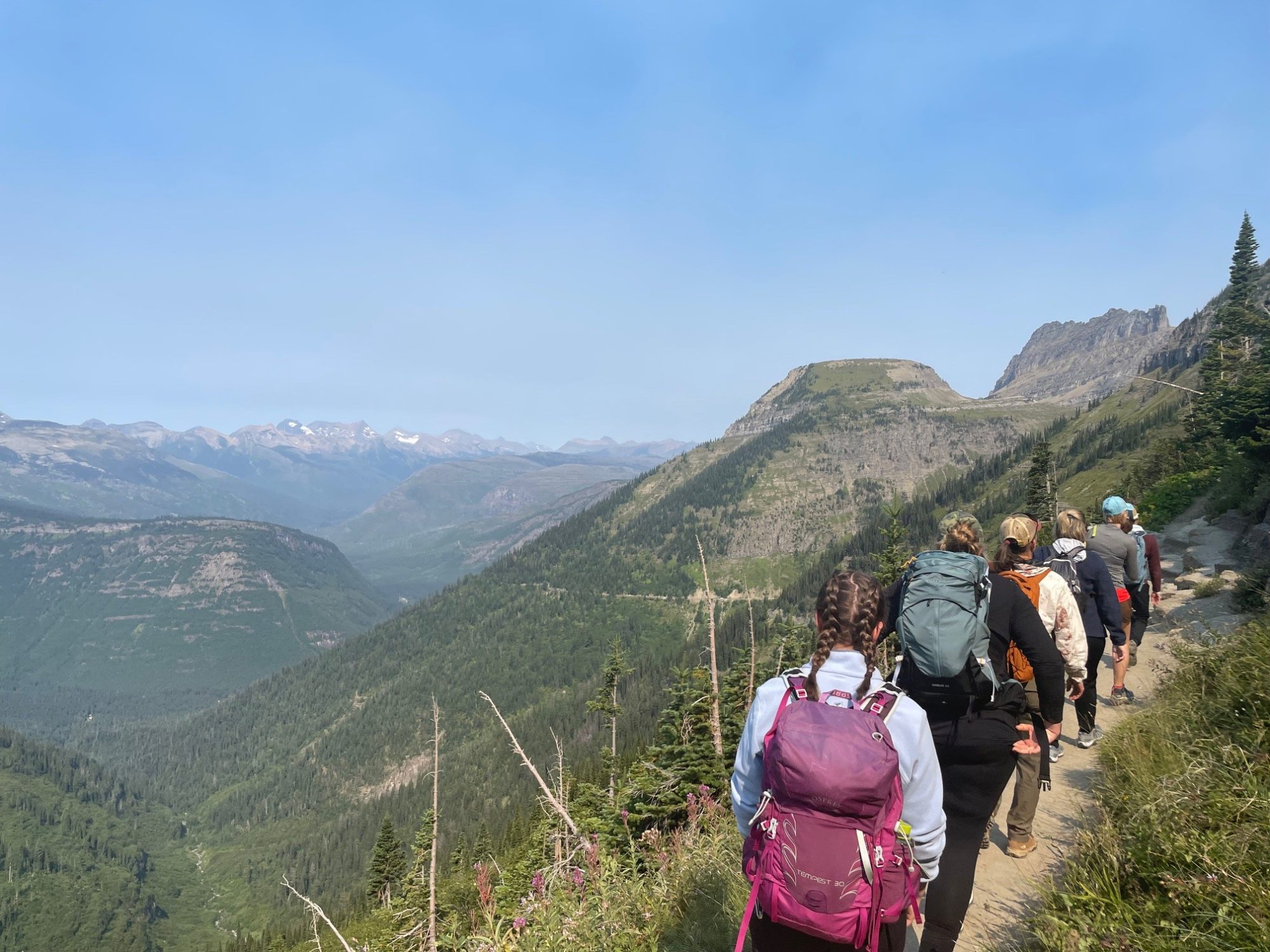
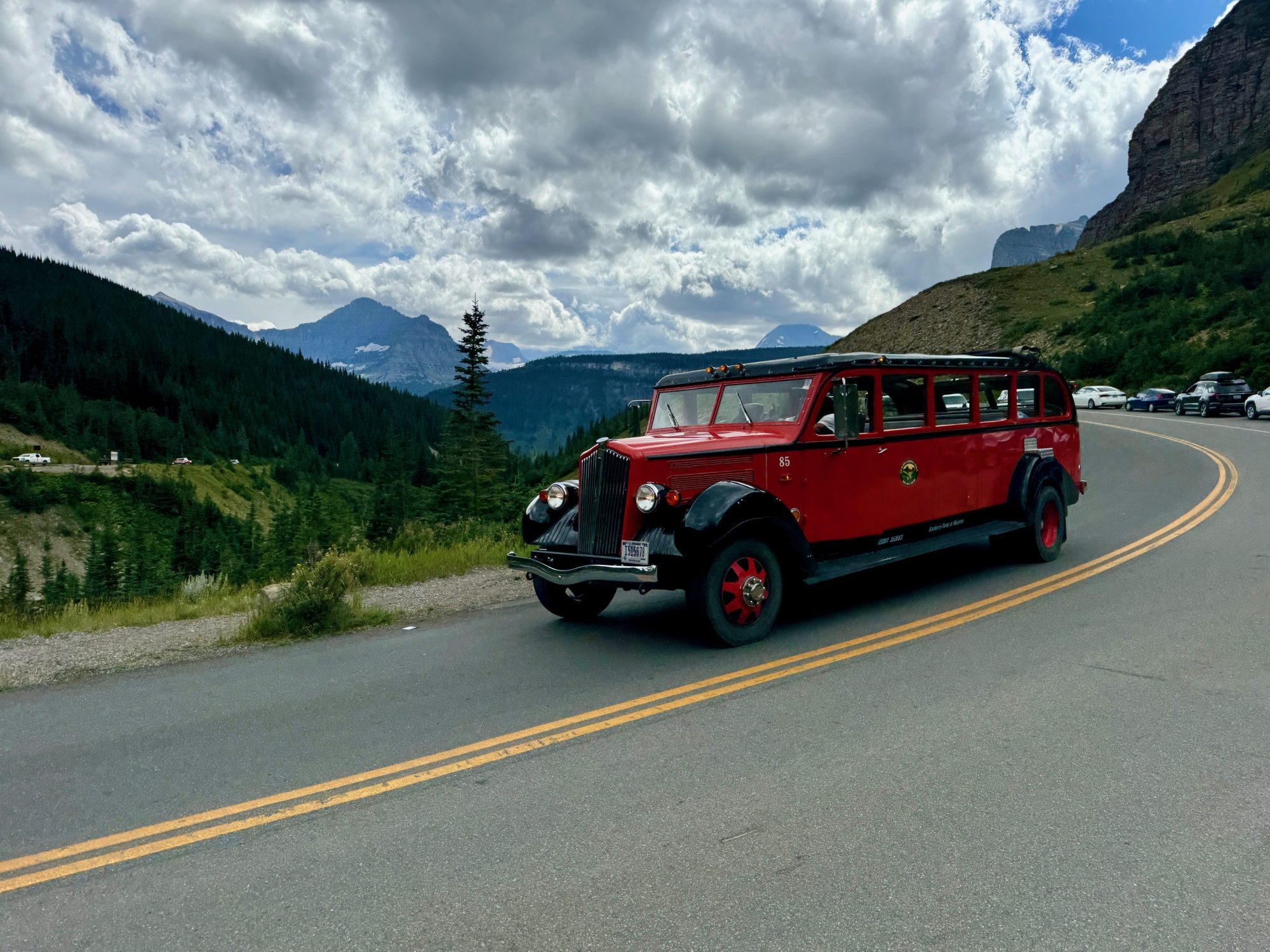
The 50-mile feat of engineering built to provide vehicular access for tourists was completed in 1932, curving around cliffs and tunnelling through mountains, with amazing alpine scenery at every turn. If you want to drive the route independently between the hours of 7am and 3pm, you’ll need a timed vehicle reservation to enter the park. These book up months in advance but limited next day passes are released at 7pm daily (we managed to snap one up for day two of our visit). Free shuttle buses also operate in the park, but an alternative chill way to experience the exhilarating drive is on an iconic Red Bus tour. Over 30, 1930’s Ford roll-back top buses, each carrying up to 16 passengers, motor through the park on informative excursions departing from both the west side and the east side the park (glaciernationalparklodges.com).
Back on the Highline Trail, the red buses are bright dots far below, snaking slowly through the park as we travel at an easy pace for three miles with Noel sharing her extensive knowledge of the abundant, delicate wildflowers thriving in the harsh alpine environment and pointing out glacial formations – hanging valleys, aretes and u-shaped valleys – formed over a billion years ago. Wildlife encounters on our route, however, are limited to Columbian ground squirrels and a deer trotting along the path as we dig into our packed lunch (a filled roll, piece of fruit, crisp and a cereal bar, provided as an option on the expedition). Shush, but I’m secretly relieved all the bears have steered clear of the well-tracked trail.
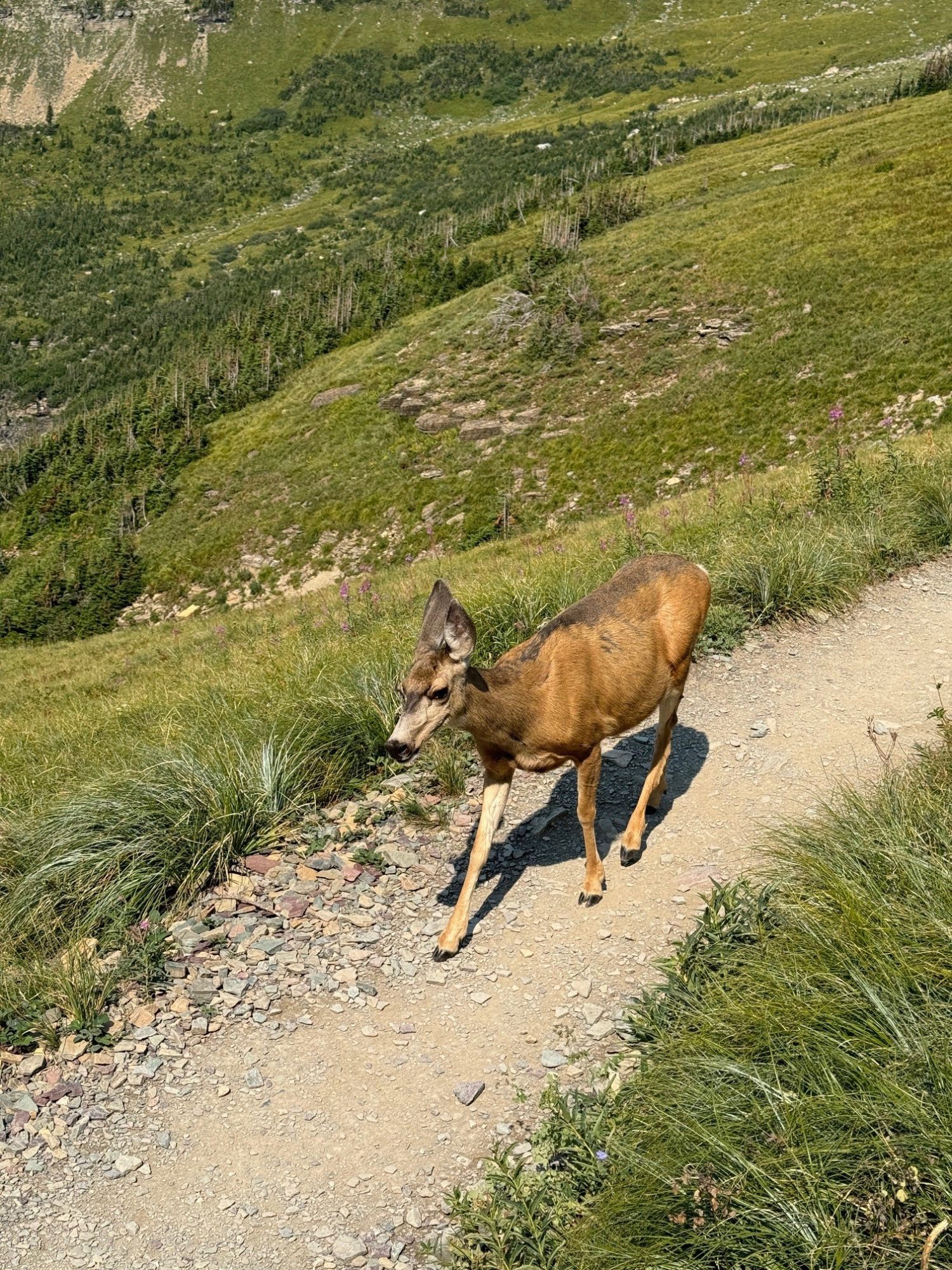
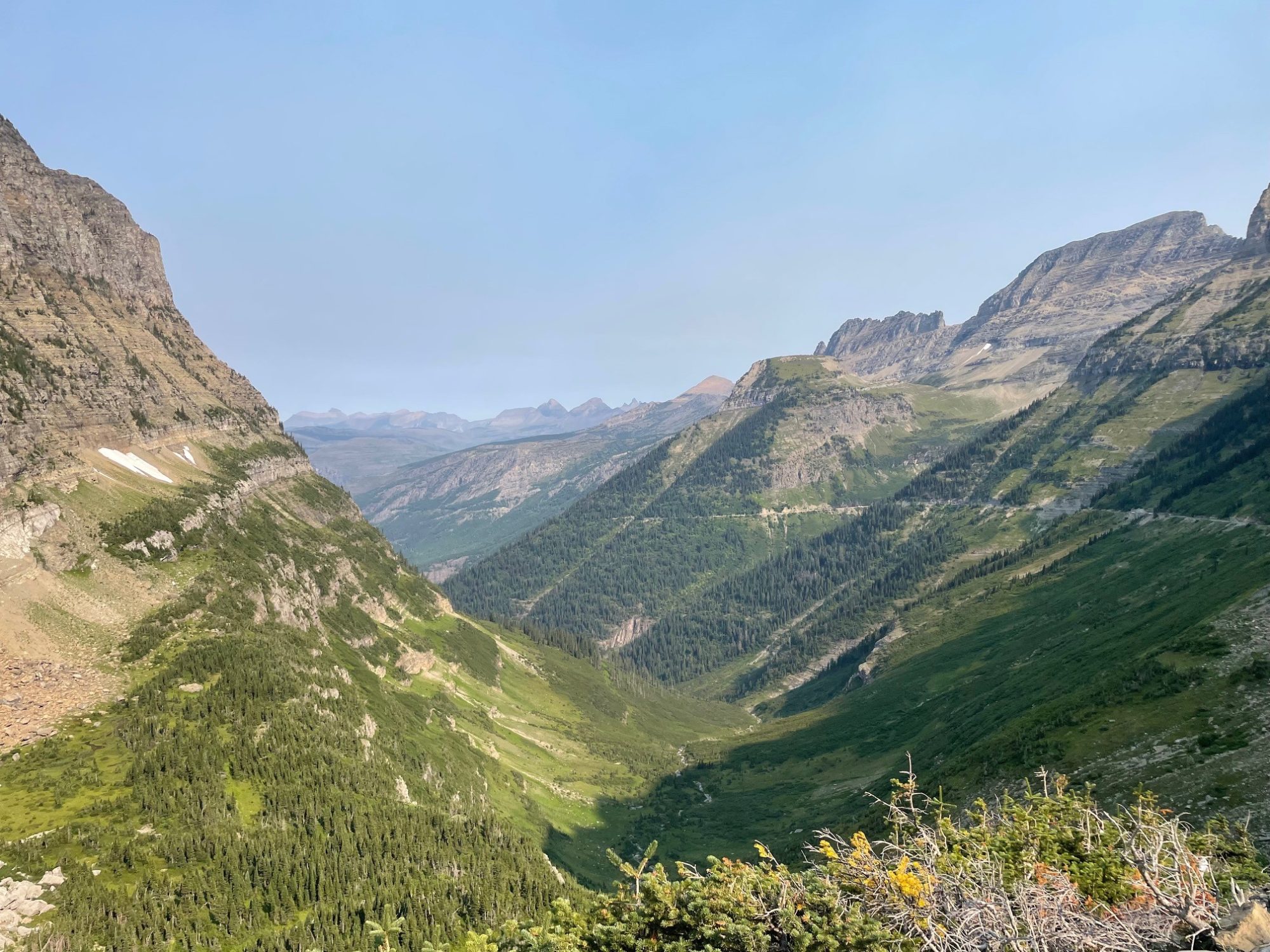
It’s reluctantly we turn back, retracing our steps to Logan Pass as other, self-guided walkers continue to hike towards The Loop (11.8 miles from Logan Pass) to catch the shuttle back to the starting point. But with a second day hiking on our agenda, we ask our guide for her trail recommendations and early the next morning head to Siyeh Bend (2 miles along the Going-to-the-Sun Road from Logan Pass) to tackle the more strenuous 10.4-mile trail with over 2,000 ft of elevation leading to Sunrift Gorge.
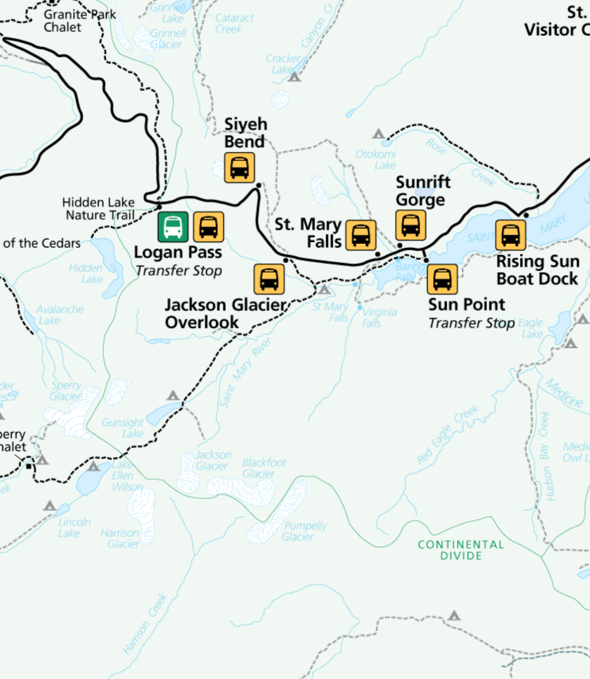
Without the comfort of a guide, I am nervous. The trail we are attempting is a known ‘hot spot’ for grizzly sightings and much less trafficked than the Highline. I feel exposed, nervous and excited all at once, but with bear spray clipped within reach, we set off chatting loudly – it’s advised to carry bear spray, walk in groups of three or more and make lots of noise when hiking in bear country – alongside Siyeh Creek and into a dense spruce forest. The route is well signposted, and we have downloaded the route on AllTrails App to keep us on track.
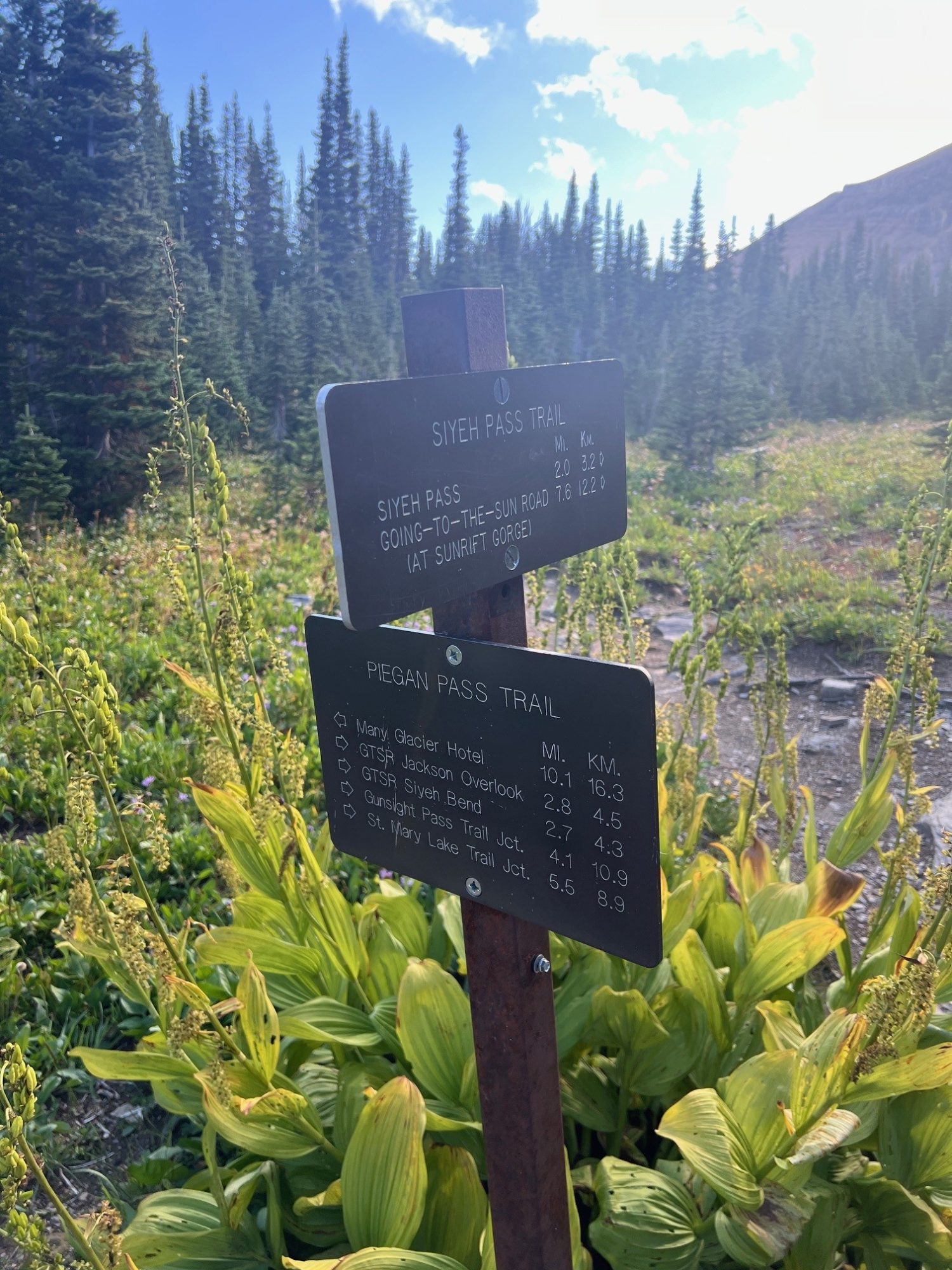
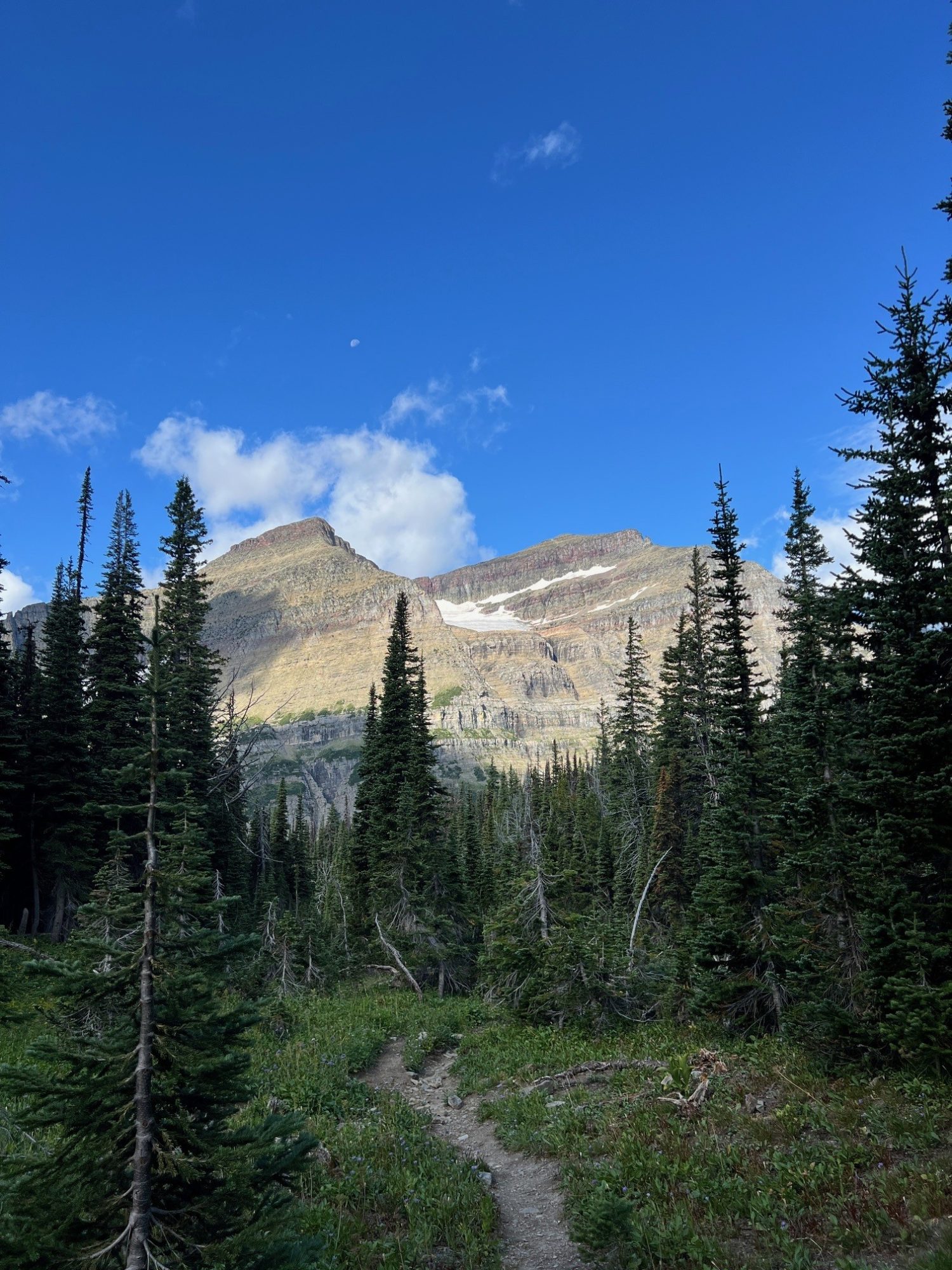
As we emerge from the trees, we enter Preston Park, a stunning glacial valley covered in alpine meadow, the jagged top of Mount Reynolds standing resolutely in the distance. I’m astounded by the breathtaking backdrop in this remote Montana landscape and marvel at the beauty of our natural world. I’ve almost forgotten about the bears (but not quite).
Now, the toughest section of the climb, a series of switchbacks climbing almost 900 feet to Siyeh Pass. Up top it’s windy and cold, and a hat, gloves and down jacket are required, but from our vantage point at 8,080 feet, one of the highest maintained trails in the park, the outlook is jaw dropping. To the east, Boulder Creek Valley stretches into the distance, a naturally vivid portrait: remote, unspoilt and serene, while to the north the massive peak of Mount Siyeh dominates the landscape, one of only six mountains in Glacier National Park over 10,000 feet.
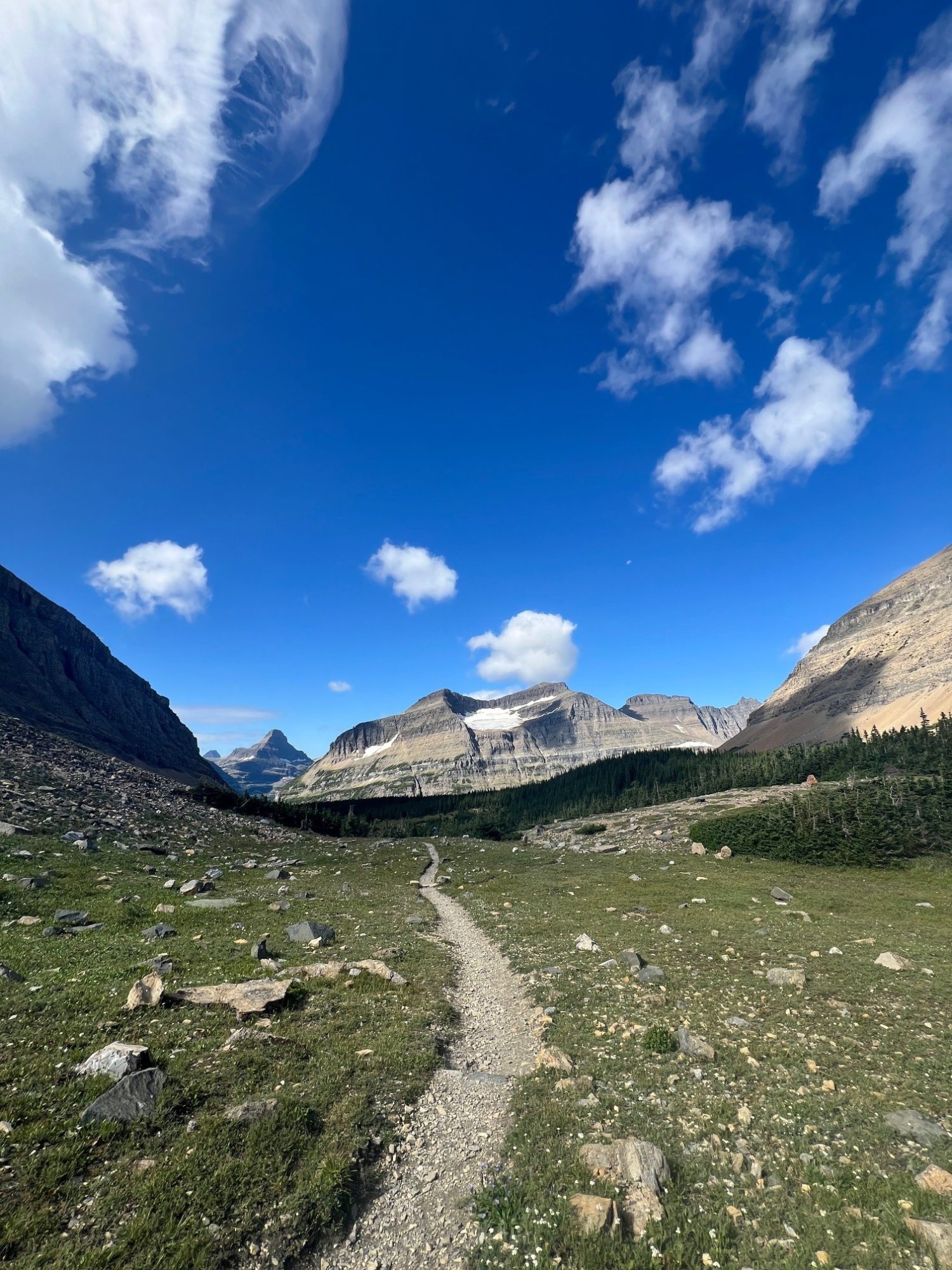
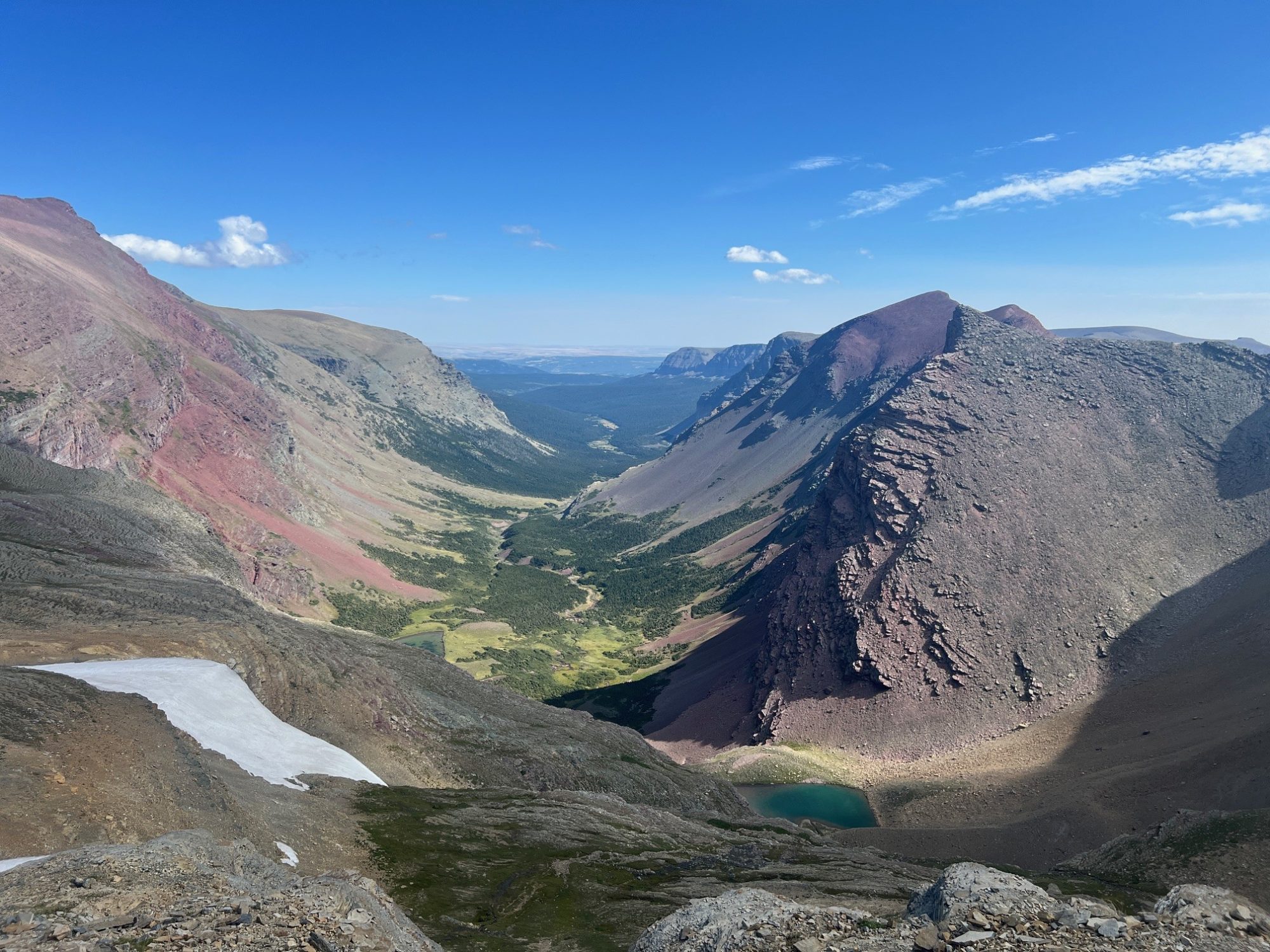
After pausing to drink in the view, we cross over the pass and start our descent towards Sun Rift Gorge. What goes up must come down and we start the abrupt downhill on more switchbacks toward Baring Creek Valley, our eyes trying to watch our feet but drawn towards the dramatic sight of the rapidly retreating Sexton Glacier nestled in a cirque (bowl-shaped hollow) on the side of the mountain. Scientists have reported the glacier lost over 30% of its surface between 1966 and 2005 and estimate that all the glaciers in Glacier National Park will have disappeared by 2030 due to the warming of our planet.
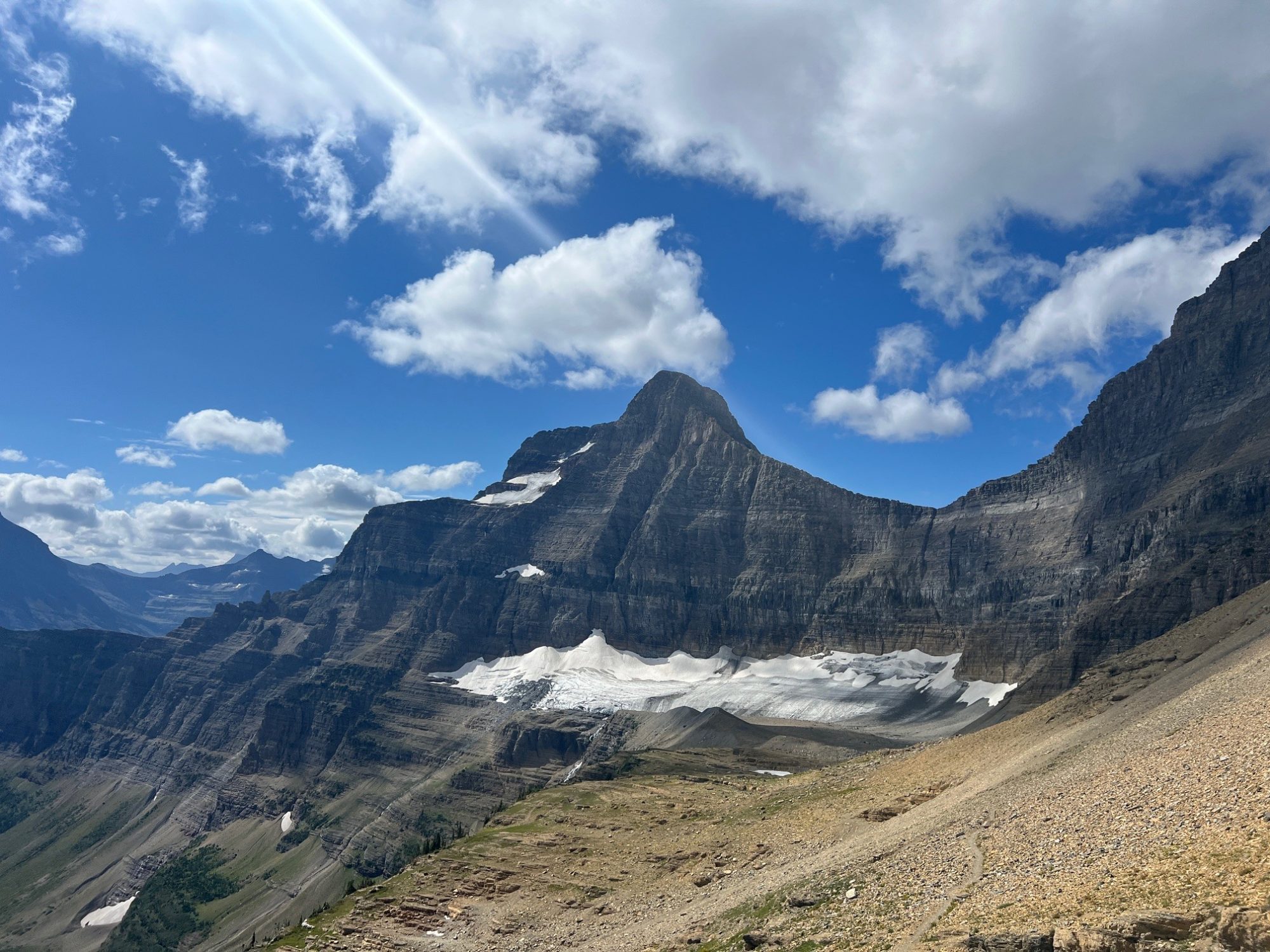
As we lose elevation and the day wears on, the temperature rises, and we shed layers to adapt. In the distance, the vivid blue water of St Mary Lake comes into view as we stroll downhill, passing a herd of grazing mountain goats, before entering an eerie forest of ghost-like, stunted trees also known as Krummholz. The blackened tree skeletons stand as a reminder of the wild force of nature, the stark remains of a landscape ravaged by fire sparked by a strike of lightning in Reynolds Creek in 2015. In the final section of this glorious hike, we pass several small waterfalls cascading over pretty, red stones and finally arrive at Sunrift Gorge, a steep, narrow canyon in the rocks. Almost six hours after heading out, we reach the shuttle bus stop at Sunrift Gorge to catch a ride back to Siyeh Bend and our hired car – exhausted but elated.
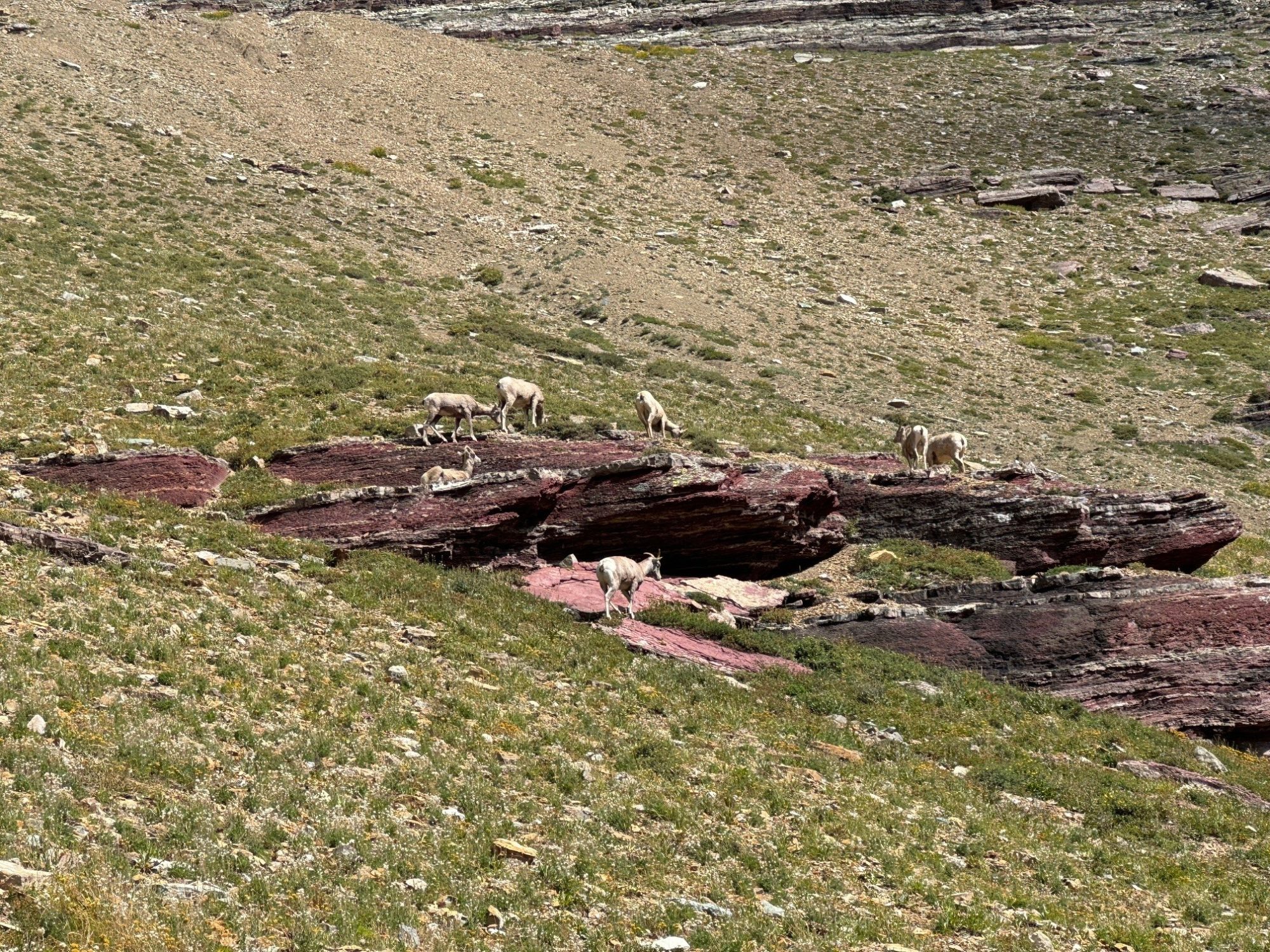
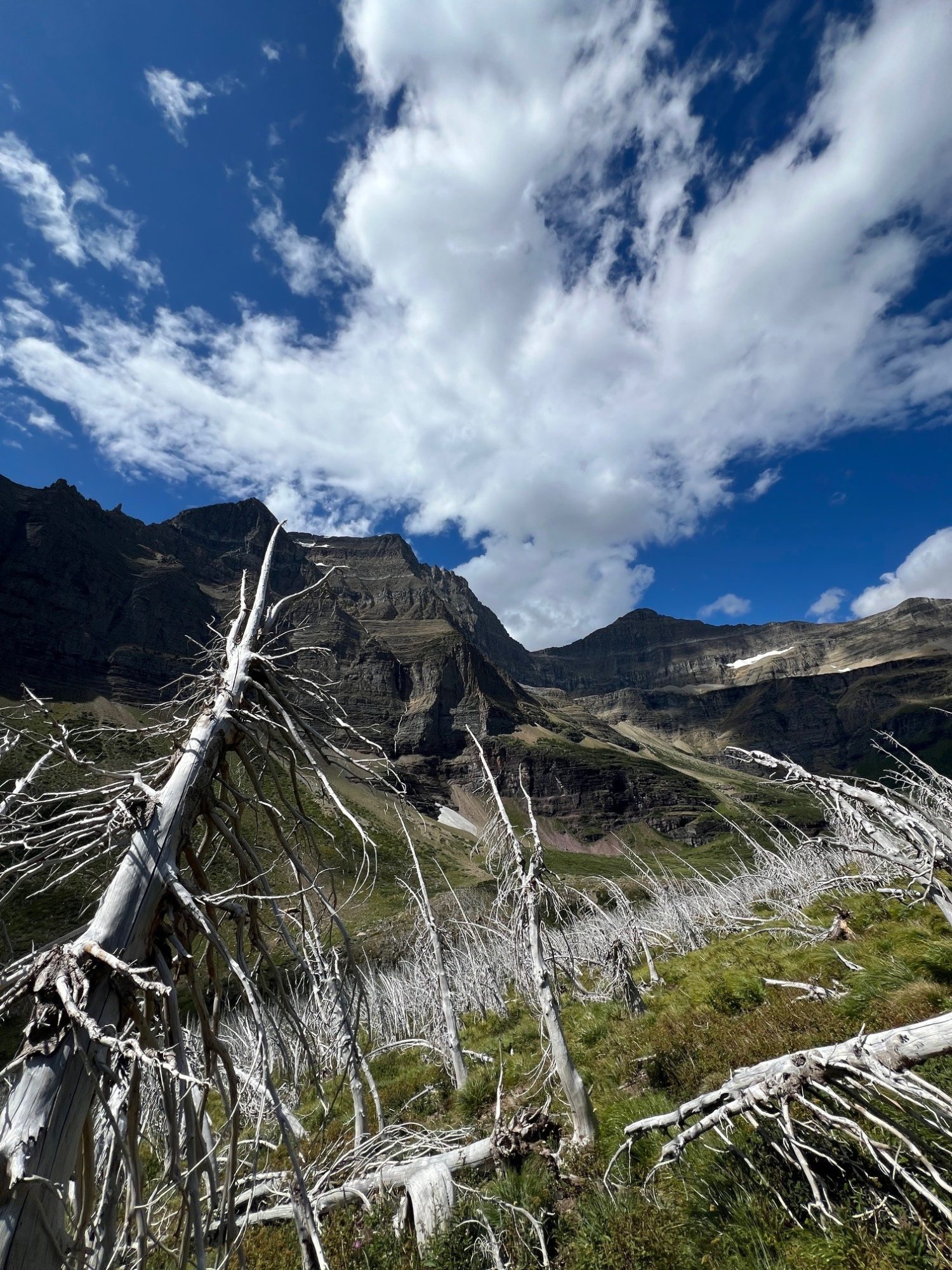
After two days, I’m blown away by the astounding beauty and sheer scale of this protected wilderness in northwestern Montana and recognise the significance of the work entrusted to the US National Park Service to preserve and care for these unimpaired landscapes. Trekking through this diverse, spectacularly scenic environment has left me feeling invigorated and refreshed. While thankful not to have come face to face with one of Glacier’s brown or black bears, I am slightly disappointed not to have had even a glimpse of one roaming freely in their natural habitat – but then it’s easy to be brave in the safe confines of the bus.
